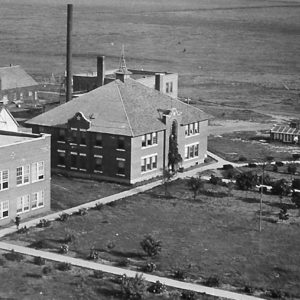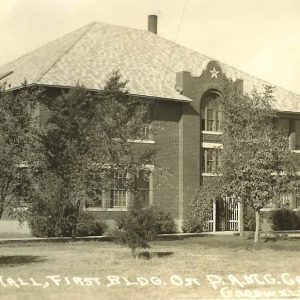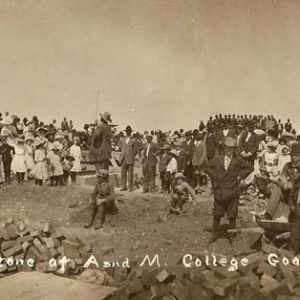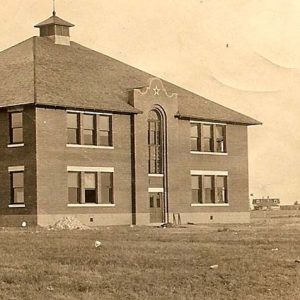Old Hesper Hall
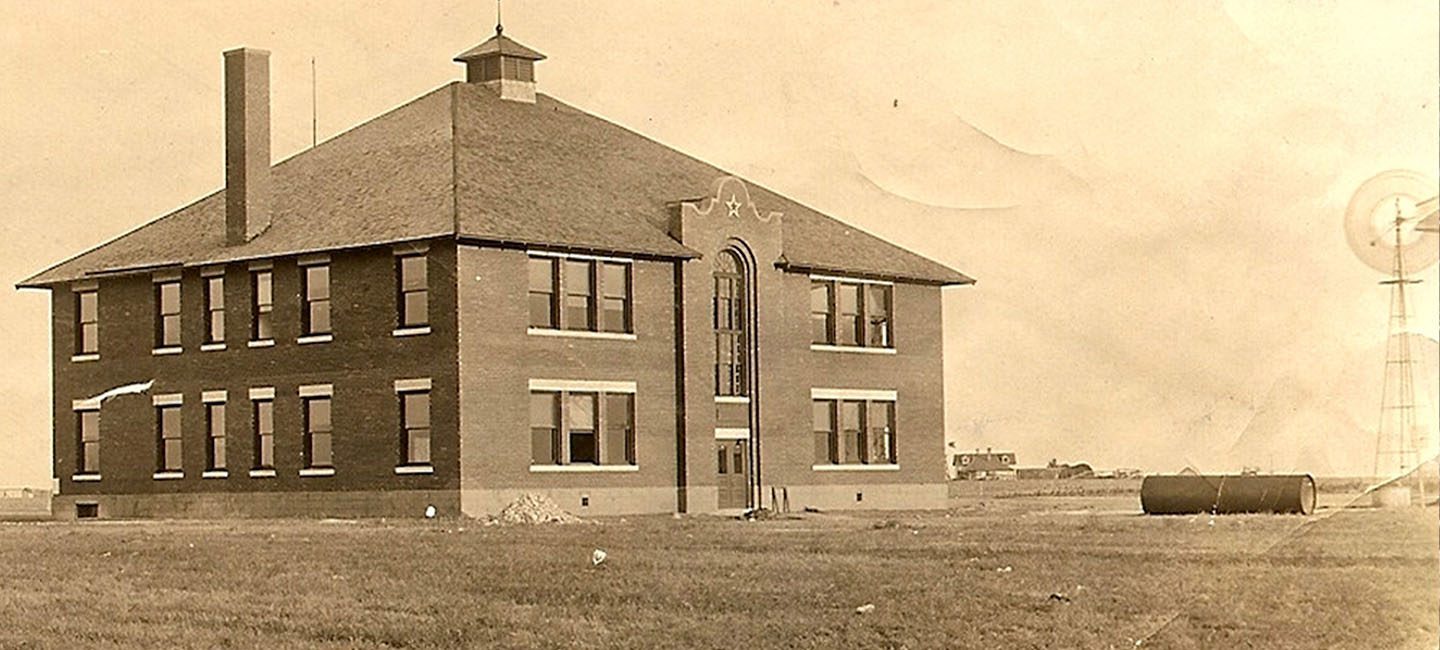
Construction began on the first building on campus, later named Hesper Hall, during the first week of May 1910 under the supervision of a contractor named Johnson. Workers loaded wagons with supplies, bricks, and concrete blocks brought in by trains and drove the wagons to the site of the new construction. Panhandle Agricultural Institute (PAI) President S. W. “Daddy” Black sent personal invitations to many people in the surrounding area asking them to help celebrate the laying of the building’s cornerstone with a picnic and speeches. On May 18, 1910, hundreds of folks, including five members of the Oklahoma State Board of Agriculture, arrived in their finery to share in the excitement and to witness the beginning of the first structure for PAI established by the Oklahoma State Legislature in 1909. May 18 was indeed an auspicious date as Halley’s Comet also made an appearance that day, certainly a favorable omen for the future of the new school. Three other Oklahoma college campuses had buildings identical to Hesper: Connors, Murray State, and Cameron. State legislation called for a “commodious central building which will be ready for occupancy at the opening of the coming season” to include space for academic and administrative units and a “library room” and “to be heated throughout with hot air, and … thoroughly sanitary in all its equipment.” The building opened in August 1910 and contained six classrooms, the library room, and an auditorium lit by “pump-up” gasoline lamps. In 1910, one room became the gymnasium, equipped with dumb bells, Indian clubs, a horizontal door bar, a punching bag, boxing gloves, and a trapeze bar; students had to engage in physical “culture” three times a week.
Eventually, the building was named Hesper Hall in honor of the Greek name for the evening star, the leader of all the stars in heaven, symbolically suggesting that PAI served as a beacon for enlightenment and education on the High Plains. In 1935, the state legislature allotted monies to remodel the building into a “first-class” college museum and library. A decade later, the building had fallen into disrepair and was condemned. Maintenance crews, led by Johnnie Haynes, dismantled Hesper carefully, for PAI President Marvin McKee insisted that its asbestos shingles, 24-foot long rafters, and flooring could be used in other buildings. Thus, recycled pieces of Hesper found new life in many college farm buildings.
By 1948, two-story, red brick Hesper with four stars decorating its façade no longer graced the campus. The No Man’s Land Museum in Goodwell now houses the building’s cornerstone, its contents, and one of the stars from atop the first building of what became Oklahoma Panhandle State University.
